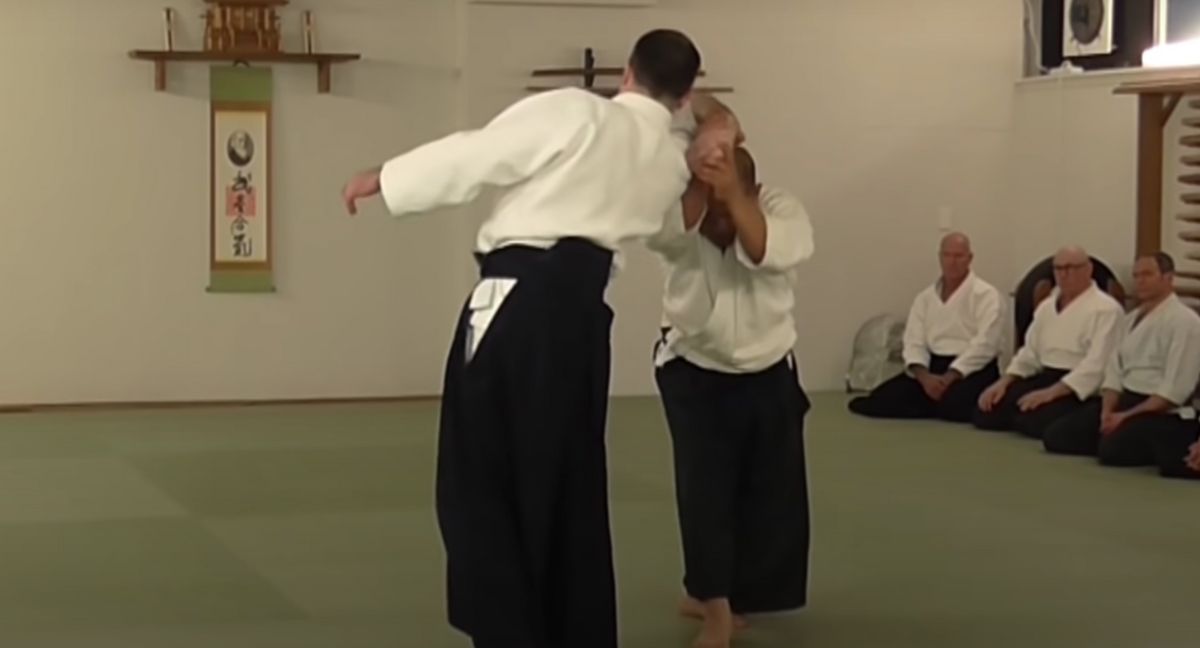What is Taijutsu?
Taijutsu (体術, literally “body technique” or “body skill”) is a Japanese blanket term for any combat skill, technique, or system of martial art using body movements that are described as an empty-hand combat skill or system. In other simpler words, Taijutsu is martial art technique without weapons.
Taijutsu is a synonym for Jujutsu (method of unarmed or with minor weapons close combat).
The words jujutsu and taijutsu can be used instead of each other.
Taijutsu and Jujutsu
Contrary to popular terms today, Jujutsu is NOT just Brazilian Jujutsu (BJJ). Brazilian Jujutsu came from Judo, Judo came from Jujutsu.
I just want to sound this out. We cannot and probably never have a uniform idea of what jujutsu is correctly called. We can’t even all agree on how to say or spell Jujutsu in English. Is it Jujitsu, Jiujutsu, Jujutsu, or Jiujitsu? Sometimes the Japanese character is simpler and precise 柔術 when writing this word.
Jujutsu is old. Taijutsu is old. It’s what the ancient warriors used when their spears and swords broke on the battlefield. They did ‘hand to hand’ or ‘hand to weapon’ or simply fought ’empty hand’. Jujutsu is another word for ’empty hand’ or ‘no weapons’ martial art techniques.
Karate and Jujutsu both have the same meaning – empty hand martial arts. So why can’t we call Karate – Jujutsu?
Well, to put it simply, they look different and they are different. It’s like calling boxing – wrestling or grappling in English. Also, the word ‘karate’ means ‘Chinese Hand’ or ‘Empty Hand’ in Okinawa, where Karate came from. When the Japanese imported Karate to Japan as one of their martial arts, the Japanese Military changed the karate characters from 唐手 (“Chinese hand”) to 空手 (“empty hand”).
For simplicity sake, I will call Karate, karate, and Jujutsu, jujutsu.
Click HERE To Book Your FREE Trial Class
Aikido Taijutsu
Taijutsu is similar to Karate but is more focused on body techniques. More specific names than taijutsu are typically used when describing a martial art: Judo (focusing on throwing and grappling), Aikido (focusing on throwing and joint locks) as well as Karate and Kenpō (focusing on striking).
In Aikido Taijutsu is our empty hand arts or techniques as opposed to bukiwaza (Warrior or Weapons Techniques). As you probably know by now, there are many flavours and Schools in Aikido. Most of them don’t commonly use the term taijutsu because they don’t have bukiwaza to distinguish it from. In fact, a martial art that doesn’t have a bukiwaza don’t distinguish taijutsu at all from its curriculum.
Check out this article for more information on the many flavours of Aikido.
Aikido Techniques
In the book the Philosophy of Aikido, John Stevens Sensei grouped together nine major techniques or philosophies in the following pillars of Aikido
These pillars are:
1. Shiho (4 directions)
2. Irimi (enter)
3. Kaiten (opening and turning)
4. Kokyu (breath power)
5. Osae (control)
6. Ushiro (attacks from behind)
7. Tenchi (heaven and earth – to stand firmly between)
8. Aiki-ken & aiki-jo (the sword of resolution and staff of intuition)
9. Ukemi (7 times down, 8 times up)
Click HERE To Book Your FREE Trial Class
In Iwama Aikido, These Major Pillars Can Be Simplified Into Two
Bukiwaza (Warrior or Weapons techniques)
- Aikijo
- Aikiken
- Bukidori (weapons taking)
- Ken Tai Jo (Sword VS Jo Staff)
Taijutsu Techniques: Body Martial Art or Empty Hand Martial Art
- Osae (control)
- Ukemi (fall 7 times, get up 8)
- Shiho (4 directions)
- Irimi (enter)
- Kaiten (open, turn, rotate)
- Kokyu (breath power)
- Koteagaeshi (forearm twist)
- Ushiro (attacks from behind)
- Tenchi (heaven and earth – to stand firmly between)
On a side note. Remember this Aikido yin and yang maxim. When doing bukiwaza, think of taijutsu. When doing taijutsu, think of bukiwaza.
Now that you know the theoretical background of Taijutsu. Come to class and train in Aikido properly. The only sure way to get good at Aikido is to turn up to Keiko and practice.
Subscribe To My Newsletter
BE NOTIFIED ABOUT BOOK SIGNING TOUR DATES
Donec fringilla nunc eu turpis dignissim, at euismod sapien tincidunt.









